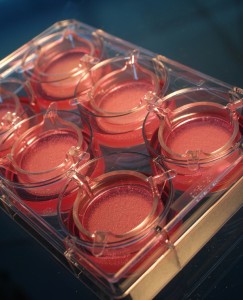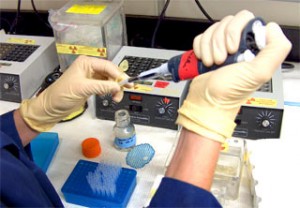2014 will see a milestone in technology when the first 3D organ will be printed. This comes as good news to people in need of transplants, since approximately 18 people die every day waiting for a new organ.
Breakthroughs in the printing of human tissue have accelerated so quickly that Organovo, a bio-printing firm in San Diego, is expected to to unveil the first 3D printed organ – a human liver.
3D printing is a complex process – layer after layer of material is formed out of live cells to construct a solid physical entity. Nonetheless, human tissue will present a few problems – for instance, creating the vascular system that provides it with the vital components to stay alive: oxygen and nutrients. Without this system, the living cells may die before the organ is removed from the printing table.
Organovo claims to have some advantage over this issue. “We have achieved thicknesses of greater than 500 microns, and have maintained liver tissue in a fully functional state with native phenotypic behavior for at least 40 days”, stated Mike Renard, executive vice president of commercial operations at Organovo.
To have a better grasp on the science behind his statement, think along these lines: a sheet of printer paper is about 100 microns thick. So the tissue thickness Organovo has printed is the same as five sheets of paper stacked up on each other.
And then you have hepatocytes – the cells making up most liver tissue. Printing this will not be enough to satisfy an end result. Different cells within tissue contain many functions and all would have to be printed to sustain a healthy, living human organ.
In response to these issues, Organovo’s research into fibroblasts and endothelial cells, which develop tiny vascular networks, has so far yielded thick tissue with good cell viability.
The upcoming liver model will only be used for Organovo’s research purposes, with emphasis on medical studies and drug research. Understandable, since developing a new drug costs $1.2 billion and takes a lengthy 12 years to complete. Moreover, any future plans for organ engineering would have to go through government review before being approved for clinical trials.
Competition will also drive Organovo to the finishing line as the Methuselah Foundation – a non-profit organization that supports regenerative medicine research – is offering $1 million to whoever can print a fully functioning liver.
120,000 people are on the organ waiting list in the US and organ rejection affects those who receive a donation. It is vital that stem cells are used to regenerate a living organ, thereby eliminating the body’s natural ability to reject. According to the Methuselah Foundation, research into funding for organ regeneration is less than $500 million, in comparison to the $5 billion for cancer research and the $2.8 billion for AIDS and HIV.




